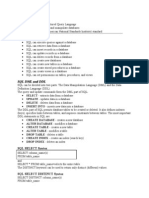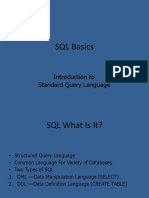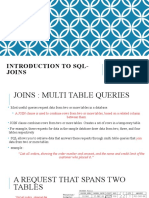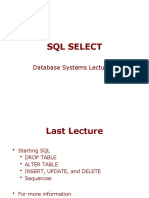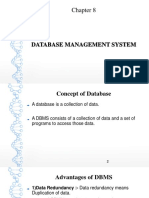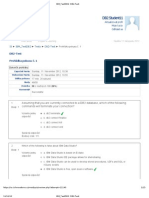0% found this document useful (0 votes)
161 views21 pagesRecap On Some SQL and Joins: Bernie Lydon Bernie - Lydon@dbs - Ie
This document provides an overview of SQL and different types of joins. It defines SQL as a standard language for accessing and manipulating databases. It describes the main SQL commands including DML statements like SELECT, INSERT, UPDATE, DELETE to retrieve, add, modify and remove data. It also covers DDL statements to define the database structure. The document explains different types of joins like inner, left and right joins using basic syntax and examples to combine records from multiple tables.
Uploaded by
Allan Rodolfo CalaçaCopyright
© © All Rights Reserved
We take content rights seriously. If you suspect this is your content, claim it here.
Available Formats
Download as PPTX, PDF, TXT or read online on Scribd
0% found this document useful (0 votes)
161 views21 pagesRecap On Some SQL and Joins: Bernie Lydon Bernie - Lydon@dbs - Ie
This document provides an overview of SQL and different types of joins. It defines SQL as a standard language for accessing and manipulating databases. It describes the main SQL commands including DML statements like SELECT, INSERT, UPDATE, DELETE to retrieve, add, modify and remove data. It also covers DDL statements to define the database structure. The document explains different types of joins like inner, left and right joins using basic syntax and examples to combine records from multiple tables.
Uploaded by
Allan Rodolfo CalaçaCopyright
© © All Rights Reserved
We take content rights seriously. If you suspect this is your content, claim it here.
Available Formats
Download as PPTX, PDF, TXT or read online on Scribd
/ 21























